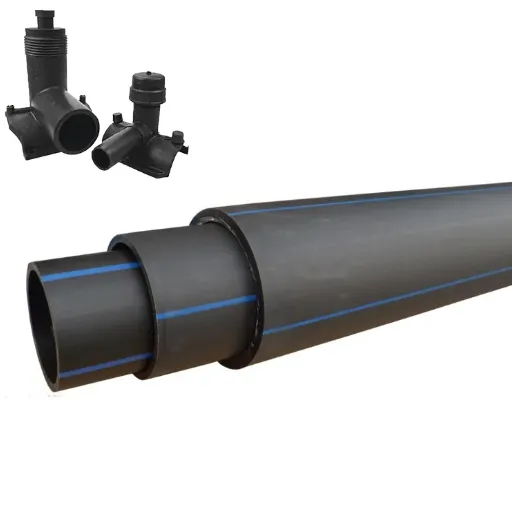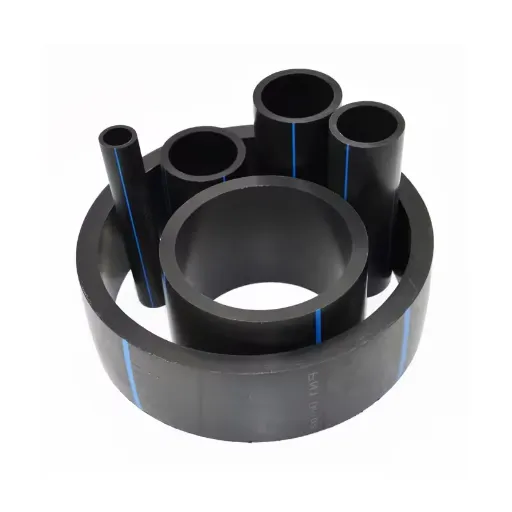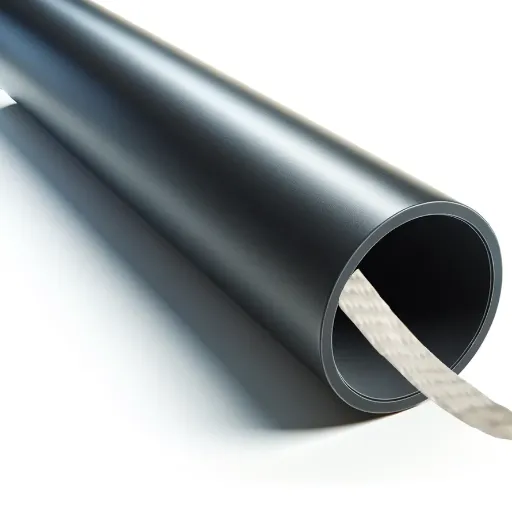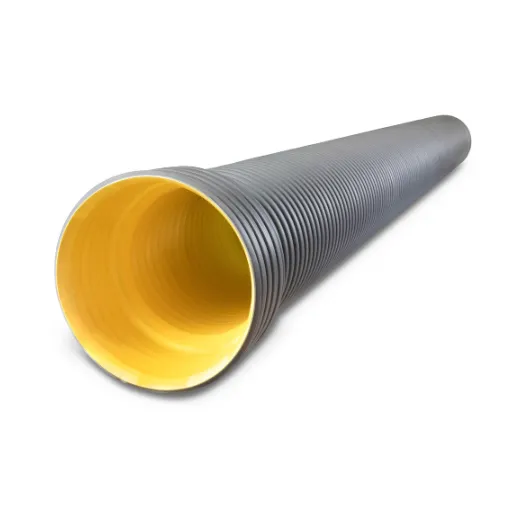High-Density Polyethylene (HDPE) pipes have changed the whole piping industry with their enduring flexibility and environmental benefits. Thanked for their very good performance over a multitude of applications-schools and residential plumbing and industrial projects- HDPE pipes are quickly gaining ranks with professionals all across the United States. But what makes HDPE pipes so special and of tremendous appeal in an intensely competitive market? Who really comprises the innovators behind this industry? We intend to explore the best HDPE pipe manufacturers in the USA, their most advanced solutions, and their role in shaping the future of sustainable infrastructure. If you are a contractor, engineer, or just interested in packing modern solution systems, this piece will offer some great insights into the advancement and opportunity HDPE technology has to offer.
Importance of HDPE Pipes in Various Industries
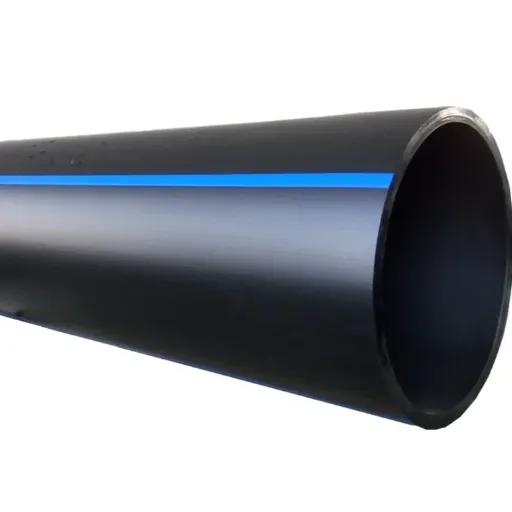
Applications in Construction and Infrastructure
HDPE (High-Density Polyethylene) pipes are at the forefront of technology in contemporary construction and infrastructure capacities on account of their durability, flexibility, and economic nature. Below are five significant applications highlighting the versatile applications of HDPE pipes where they never fail to become indispensable:
🚰 Water Supply
In municipal and residential water supply arrangements, HDPE pipes are used extensively mainly because of the pipe’s enhancement in resisting corrosion, scaling, and biological growth. Also, the weld joints of the pipes are leak-proof, and so water loss is minimized, thereby maximizing the system’s efficiency. It is shown from laboratory tests and field studies that HDPE pipes can last for more than 50 years upon water distribution systems, which further diminish maintenance cost over the long term.
🚿 Drainage and Sewerage
HDPE remains inert to chemical interactions and is therefore fit for use in wastewater and sewage management schemes. The inner lining of the pipe is smooth, permitting easy flow of water; whereas the inherent flexibility of the pipe allows it to withstand ground movements, thus reducing the incidence of cracks or blockages.
⛽ Gas Distribution
HDPE pipes are highly popular for the distribution of natural gas and LPG (liquefied petroleum gas). The pipes tolerate high pressure and chemical resistance, which guarantees the safe, efficient delivery. According to industry studies, over 90% of all natural gas piping in the U.S. consists of HDPE pipelines.
🌱 Irrigation For Agriculture
Farmers find HDPE pipes apt for irrigation systems owing to their ease of installation and portability. Likewise, the pipes need to hold onto their durability against strong UV radiation. Further, pipes are used for exact water application in large-scale irrigation and drip systems, which increases water-use efficiency.
🏭 Industrial Applications
HDPE pipes find application in industrial settings, mainly in carrying chemicals, compressed air, and other sensitive fluids. Their resistance to chemical and thermal wear equips them to handle such materials in hazardous environments or extreme operational conditions.
Each application highlights the technical superiority exhibited by HDPE pipes and hence goes into the construction of sustainable, efficient, and resilient infrastructure frameworks across multiple sectors.
Uses in Water Supply and Irrigation Systems
HDPE pipes, otherwise known as High-Density Polyethylene pipes, find a myriad of uses in municipal water supply and irrigation systems, as these pipes are durable, flexible, and corrosion-resistant. Some inland applications for HDPE pipes used in this sector are:
- Municipal Water Distribution Systems: In municipal water distribution systems, joint leakages and a shorter life span are causes of serious water loss which HDPE pipes do not suffer from. Most established HDPE pipe systems function 50 years or more without maintenance.
- Agricultural Irrigation Systems: Farmers use HDPE pipes for surface irrigation and drip irrigation systems. The pipes efficiently deliver water, so less water is wasted and in turn, water conservation is encouraged in areas of scarce water resources.
- Transmission of Potable Water: Certified for potable water transmission, HDPE pipes are preferred over other pipe materials for both residential and industrial water supply systems since these pipes are nontoxic to drinking water, do not encourage bacterial growth, and conform to very stringent health and safety requirements.
- Rainwater Harvesting Systems: These pipes are used to collect, transport, and store rainwater. They resist environmental stress and thus work effectively in rainwater harvesting applications towards sustainable water management solutions.
- Rural Water Supply Projects: HDPE pipes find the best use in rural water supply works, as the transportation and installation costs are cheaper, and the pipes can withstand rough environmental conditions in rural areas, thereby assuring consistent water availability over long distances.
Each of these uses attests to the importance of HDPE pipes in pushing forward efficient and sustainable water management systems throughout the world.
Role in Oil and Gas Industry
High density polyethylene pipes have become apt materials for the oil and gas industries because they have high strength, corrosion resistance, and can endure flexion in severe operational environments. These pipes find application all over the industry and offer cost-effectiveness and operational reliability. They are some of the most common uses within this sector:
Pipeline Transportation
For the underground transportation of oil, natural gas, or other petroleum products, HDPE pipes are preferred. Their chemical resistance ensured that the liquids should pass without leakage or contamination, even at very high pressure.
Offshore and Underwater Applications
Due to their flexibility and corrosion resistance, HDPE pipes are the most suitable choice for underwater pipelines from offshore platforms; these pipelines maintain adequate structural integrity in salt media and under extreme pressures.
Water Injection Systems
HDPE pipes act as water injection systems in oilfields and are critical to enhanced oil recovery processes. These pipes can last long and are reliable under high-pressure water flow while resisting material degradation.
Gathering Gas Systems
HDPE pipelines are used in gas gathering systems for natural gas extraction operations. They perform their service carrying raw natural gas from the wellheads to processing plants with low maintenance cost, for what they sustain over long use.
Chemical Transfer
There are several occasions in the oil and gas industry when corrosive chemicals such as hydrochloric acid need to be transported. HDPE pipes have a high resistance to chemicals and can carry these hazardous chemicals safely and efficiently.
Hence, the above uses illustrate various applications of HDPE pipes in the oil and gas industry, contributing to operational efficiency and infrastructure resilience and cost minimization.
Key Benefits of Using HDPE Pipes
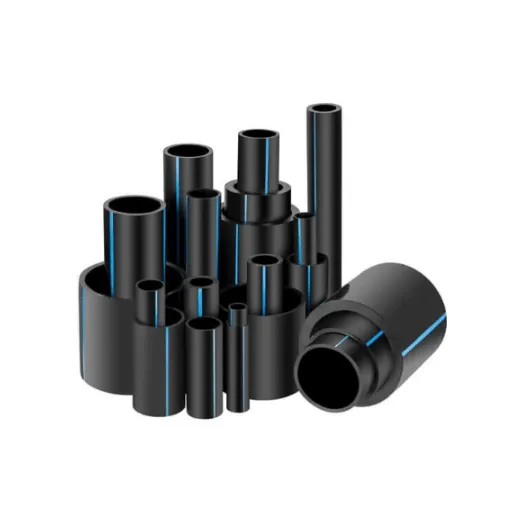
Durability and Resistance to Corrosion
HDPE pipes enjoy a reputation for durability and corrosion resistance. Thus, they become the best choice in harsh industrial environments. Some elements contributing to HDPE pipes’ durability and corrosion resistance are the following:
| Resistance Feature | Description | Benefit |
|---|---|---|
| Chemical Resistance | Resists acids, bases, and corrosive substances | Long-term reliability in aggressive environments |
| Non-Degradable Material | Unlike metal pipes, HDPE doesn’t rust or corrode | Negligible degradation over time |
| High Impact Strength | Resists physical stress and cracking | Suitable for areas with heavy loads |
| UV Radiation Resistance | UV-stabilizing additives protect from sun damage | Maintains integrity in above-ground applications |
| Longevity | Service life of 50-100 years | Reduces replacement frequency and costs |
By virtue of these properties, HDPE pipes are resistant when deployed in important edifices and further help maintain a cost-effective and sustainable manner of operation.
Cost-Effectiveness and Long Lifespan
HDPE pipes are generally touted as being economical and durable and thus provide exceptionally good value for money throughout an operational lifespan that could stretch well beyond several decades. Here are five pertinent points that outline their cost and longevity advantages:
💰 Reduced Maintenance Cost
Sometimes referred to as corrosion-resistant, HDPE pipes offer great resistance against corrosions, chemical reactions, and scaling. Compared with traditional materials, this makes vastly less maintenance for HDPE pipes, hence enormous cost gains over time.
⏰ Longer Life Span
HDPE pipes are meant to last from 50 to 100 years, given the normal operational conditions. An average lifetime hence requires less frequent replacement projects, thereby lowering expenses, both labor and materials.
🔧 Lower Installation Costs
Being flexible and lightweight makes HDPE pipes easy to transport and install; trenchless methods even lower excavation and labor costs compared with installing rigid pipes.
⚡ Energy-saving During Operations
The smooth internal surface of HDPE pipes minimizes frictional losses while conveying fluids, thus reducing the energy requirements for pumping. Over a period of time, this helps in lowering operational costs.
🛡️ Resilience under Harsh Conditions
HDPE pipes sustain performance under extreme conditions, with temperature variation being one and high pressure being the other. Resilience thus mitigates the possibility of being damaged and subjected to unplanned downtime costing repair and replacement.
All in all, these properties distinguish HDPE pipes as a cheap, long-term solution to various complex infrastructure needs.
Flexibility and Ease of Installation
Exceptionally flexible with ease of installation are some of the attributes of HDPE pipes. Hence, HDPE pipes are fit for any kind of application and environment. Given below are the five points depicting the aforementioned advantages:
📐 Bend Radius
Compared to other piping materials, HDPE pipes can better suffer bend radii, and therefore are installed without many fittings or joinery. For instance, an HDPE pipe of SDR 11 can be bent as tightly as 25 times its diameter.
🪶 Lightweight Construction
The major advantage of HDPE pipes is their lighter weight as compared to steel or concrete pipes, which makes them easy to transport and handle during installation. To give an example, an HDPE pipe of 6-inch diameter weighs nearly 60 pounds each 20-foot length, whereas a ductile iron pipe of the same size weighs more than 250 pounds.
🚧 Trenchless Installation Techniques
Such installation methods for HDPE pipes are horizontal directional drilling (HDD), pipe bursting, and slip lining. These operations reduce excavation requirements and limit surface disturbances; hence, lesser excavation could mean lesser labor costs, a precious commodity always sought after within urban areas or environmentally sensitive zones.
🔥 Fusion-Welding Capabilities
Heat fusion is used to join HDPE pipes, creating continuous, leak-free joints much faster than other joining methods. Because fusion is such a simple process, installations tend to take less time, thereby further reducing on-site time.
🛡️ Corrosion-Free Material
The ability of HDPE pipes to resist rust or other external chemical processes enables them to be directly laid in corrosive soils or submerged without coatings or linings. This, in turn, eliminates a good deal of pre-installation activities and cost.
These features turn HDPE pipe into a product with very efficient installation techniques adaptable to complex infrastructure demands, with substantial savings in labor and material.
Manufacturing Process of HDPE Pipes
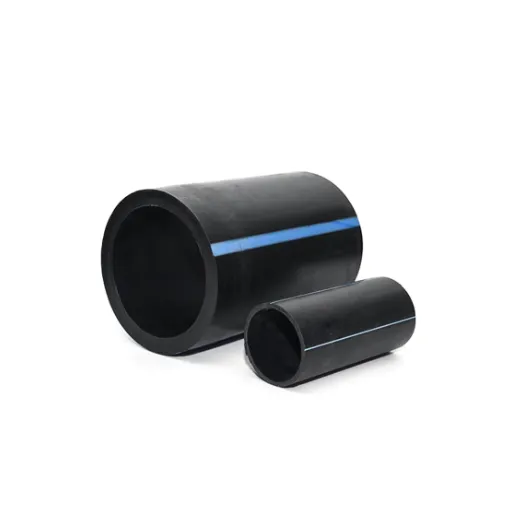
Raw Materials and Production Techniques
The manufacturing process of HDPE pipes begins with procuring high-quality polyethylene resin to be used as the prime raw material. Being one among thermoplastic polymers and derived from polymerization of ethylene, this resin must be carefully treated. High-density polyethylene, in fact, is chosen for its crystallinity, molecular weight, and density, which determine the strength, flexibility, and resistance to external stresses of the pipe manufactured.
About the shaping of HDPE pipes, advanced working methods, extrusion being one, play a major role. In the extrusion process, the polyethylene resin gets melting, under the high-temperature-controlled conditions of about 356°F to 446°F, to ensure a smooth melt with no physical binding. Molten polymers are pressed against a die to give the pipe its diameter and wall thickness. With calibration and cooling, the structural integrity and dimensional accuracy of the pipes get retained.
Current manufacturing installations use automation and real-time monitoring systems to provide constancy under required quality specifications containing ISO 4427 or ASTM D3350, according to the requirements of the application. Extrusion could involve adding additives like stabilizers, pigments, or UV blockers to coat or enhance weathering or durability characteristics in adverse environmental conditions.
Modern developments of HDPE pipe manufacturing consider energy conservation, waste reduction, ecological and money-saving benefits. By combining carefully tested raw materials with advanced production methods, HDPE pipes are designed to meet the needs of diverse industries while excelling in performance for an extended time.
Quality Management Systems in Manufacturing
In the target field, QMS or quality control systems appear to be the foundation on which to build consistent production standards, regulatory compliance, and improvement in all aspects of operations. An efficient QMS ties the processes of monitoring, evaluations, and corrective actions together to preemptly tackle failures and promote optimization in workflow efficiency.
Let these types of standards follow their due process as industry benchmarks, wherein ISO 9001 is a prominent example, emphasizing a systematic approach to quality control. These standards weigh heavily on principles such as focus on the customer, efficiency of processes, risk-based thinking, and all decisions based on facts. In more sophisticated implementations, a QMS presently exploits state-of-the-art technologies, including real-time monitoring systems, machine learning, and big-data analytics for analyzing production data, forecasting deviations in processes, and improving product quality.
Manufacturing operations employ quality assurance practices into production workflows, minimizing defects and preventing unnecessary downtime due to errors, which, in turn, maintains compliance with stringent regulatory requirements. This directly results in large cost savings, increased customer satisfaction, and sustainable growth in operations.
Key Trends in the HDPE Pipe Market
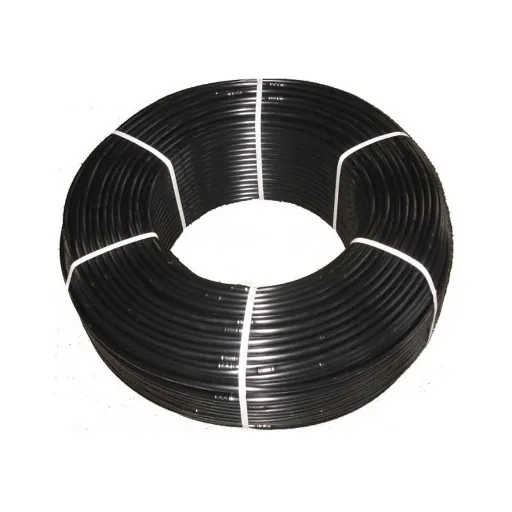
Innovations in HDPE Pipe Technology
Recent advances in HDPE pipe technology focus on increasing durability, efficiency, and sustainability. Enhanced manufacturing techniques for pipes have helped to develop products with enhanced resistances to cracking and corrosion such that they can be used in more applications, including water distribution, conveyance of gases, and mining.
🔬 Smart HDPE Pipes with IoT Integration
The other popular type of HDPE pipes are the smart ones with embedded IoT sensors that monitor temperature, pressure, flow rates, detect leaks, and maintain operational efficiency. Intelligent systems perform predictive maintenance, minimizing downtime and operational costs.
A series of initiatives have put in place environmental measures towards ensuring and promoting sustainable development. For instance, HDPE manufacturers nowadays produce pipes for which the recycled content is increased without loss of performance. Efforts such as these are in line with the global sustainability agenda and assist industries in reducing their carbon footprints. Newer-fledged jointing procedures such as electrofusion and butt welding have further enhanced speed of installation and efficiency while ensuring minimum waste generation.
Together, these innovations address prominent challenges that industries relying on pipeline infrastructure face, further showcasing how advanced technology continues to transform the HDPE pipe sector.
Sustainability and Environmental Considerations
Sustainability, in this case, is crucial for the development and use of HDPE pipes. HDPE being a recyclable material allows it to play a part in enhancing the environment by repurposing used pipes into different products instead of dumping them into landfills. This method of recycling, thereby, lessens the environmental footprint and supports a circular economy further. Because of their weight and energy requirements for production, HDPE pipes also have a far smaller carbon footprint than conventional materials, such as steel or concrete.
♻️ Recyclability
HDPE pipes can be repurposed into different products instead of being dumped into landfills, supporting a circular economy.
🌱 Lower Carbon Footprint
Due to their lightweight nature and energy-efficient production, HDPE pipes have a smaller carbon footprint than steel or concrete alternatives.
⏰ Extended Lifespan
With lifespans often exceeding 50 years, HDPE pipes reduce the need for frequent replacements, minimizing resource consumption.
Furthermore, the extended life of HDPE pipes, often exceeding 50 years, reduces the need for frequent replacements and, hence, reduces resource consumption over time. Being leak-proof, the material keeps away water from contaminants and also from damaging natural ecosystems. HDPE pipes thus foster long-term ecological balance compared to other pipeline solutions as they themselves are more susceptible to environmental aggressors, such as corrosion and temperature changes.
Lastly, the emerging methods in manufacturing promote the so-called “greener” production, such as energy-efficient processing methods and the use of renewable energy sources in pipe manufacturing plants. These advancements collectively establish the industry’s commitment to responsible practices within the global environmental directives.
Market Growth and Future Projections
It has been an observation on my part that the demand for the green piping material is growing, and at a phenomenal rate. The growth is generally due to compliance with regulations, awareness in the consumers, and industrial shifts toward sustainability. There are stricter environmental regulations being put forth by various governments and organizations in the world so that the industries are forced to opt for environmentally friendly piping solutions. On the other hand, end users themselves are now rather enlightened about the long-term benefits of sustainable materials, which further helped to buttress their choices towards these products.
From my point of view, renewable energy projects and smart infrastructure initiatives are equally driving the market demand, and the piping systems find a very important place in these projects, chiefly solar installations, water desalination, and geothermal-energy facilities. These systems focus mainly on lightweight and durable materials, stressing the importance of sustainability; thus, there are many innovations and further growth opportunities for this industry. Therefore, urbanization combined with population growth in developing countries is another factor that pushes the demand for modern, scalable, and large-diameter piping solutions.
Looking forward, I am optimistic that, with new developments in material sciences, the landscape of the piping industry will be further changed. Developments in bio-based polymers, recycled composites, and smart materials with enhanced performances and self-monitoring capabilities create forecasts toward a more sustainable aspect. Such innovations will work toward global sustainability goals while catering to the ever-growing demands of industries and customers to sustain market growth in the years to come.
Tips for Selecting the Right HDPE Pipe Manufacturer
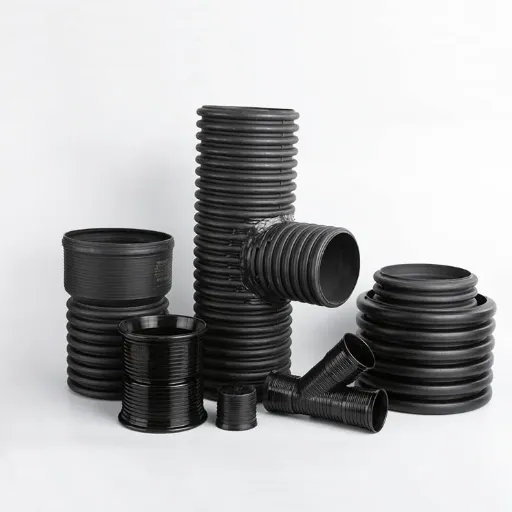
Evaluating Quality Control Practices
When choosing an HDPE pipe manufacturer, some stakeholder factors revolve around the commitment to quality control adjustment. A high-quality HDPE pipe is subjected to dyeing by international standards, maybe ISO 9001 certifications, to ensure the treatment is reliable and can hold up under alternate conditions. The procurement of good raw materials and the use of best production methods inexplicably affect the performance of the final product. Manufacturers should have a very stringent testing regime; they should test for pressure resistance, flexibility, and longevity of the pipes to ensure continuous quality output.
🔍 Advanced Manufacturing Processes
The use of the cutting-edge processes in manufacturing is also an essential aspect of quality control. Leading manufacturers often automate production with real-time monitors to spot defects as the product is being made. For example, ultrasonic or non-destructive testing detects wall thickness and any potential weak points in the pipes to minimize errors. These techniques also ensure the product standards while reducing waste and supporting environmentally friendly policies. Manufacturers continuously seeking to upgrade their facilities and tooling are identified clearly as those that maintain good quality.
In addition, transparency in quality control practices is critical. Manufacturers that openly issue certificates or detailed reports for their products instil confidence in buyers. Knowing material traceability, production dates, and testing results ascertain that everything follows project specifications. Also, a company that offers product support and warranties shows a considerable value for the quality of the product. Taking all these into consideration with sourcing, technology, and transparency will enable customers to make an informed choice on whom to work with for their HDPE pipe needs.
Understanding Size and Specification Needs
During the planning stage of a particular project and in the process of choosing HDPE pipes, it is crucial to understand the size and specification requirements. In all instances, it is important that the size of the pipe, such as its diameter and wall thickness, be suited to its intended application to ensure maximum efficiency. Depending on factors such as the nature of the fluid being ferried, the grade of pressure applied, and the environmental situation, the size and class of HDPE pipe get altered. For instance, piping systems under high-pressure usage demand pipes with thick walls, whilst an application under low pressure would suffice with the thinner-walled ones.
📏 Standards and Regulations Compliance
Alongside defining pipings, more attention has to be given to conformity to industry standards and regulations. International standards such as ISO, ASTM, or EN will lay down manufacturing guidelines, testing, and performance criteria aimed at assuring the HDPE pipe’s durability and reliability. Certain industries might have the necessity for strict safety measures and certification requirements, such as water supply and gas distribution. Properly specifying pipes considering these standards will ensure that the customer has the compatibility required by the technical and legal frameworks within the project.
The integration of design insight with modern design tools and resources refines the selection process. While engineering software can be used or manufacturers may be consulted using modern simulation methods for pipe selection. These instruments perform calculations, such as flow rates or stress analysis, specific to operating conditions.
Frequently Asked Questions (FAQ)
Q: What are HDPE pipe manufacturers in the USA famous for?
HDPE pipe manufacturers in the USA are known for manufacturing a high-quality plastic pipe product that is durable and reliable. They adhere to strict ANSI and ASTM standards, ensuring that the pipes conform to all industry regulations. Their manufacturers cater to an array of applications, including those for water pipe, sewer, and electrical conduits.
Q: How do HDPE pipes stand against other types of piping materials?
HDPE pipes usually outrank conventional matters like PVC and metal because of their flexibility, inherent corrosion-resisting properties, temperature extremes, and long-lasting performance. Very lightweight and easy to install, HDPE pipes get applied across telecommunications and petrochemical industries. They also bear loads at tensile strengths far greater and various pressure ratings.
Q: What sizes do HDPE pipes come in?
HDPE pipes come in a wide range of diameters usually from 4 to 36 inches. This variety empowers manufacturers to fulfill customer needs in different applications with the correct sizes and pressure ratings available for any project.
Q: What are the factors that I should be watching for in picking a credible supplier of HDPE pipes?
The key factors to take into consideration when choosing a supplier of fulfilment of HDPE pipes include ANSI specifications, ASTM standards, and the overall quality of inspection procedures. Also, providers should provide diverse sizes and pressure ratings of HDPE pipes. Go ahead and ask for product certifications from suppliers. Common ones are NSF and PPI, suggesting the best possible product.
Q: What is the meaning of PE4710 in HDPE pipes?
PE4710 is HDPE material recognized for its better performance under pressure. The pipes made from PE4710 comply with very stringent requirements in regards to durability and performance over long periods of time, especially in harsh environments such as those found in water and sewerage systems.
Q: Can HDPE pipes be installed by fusion?
Yes, HDPE pipes are designed for fusion installation, which means joining them without the use of intermediates-is the best method to ensure integrity and good reputation of the piping system. Fusion welding is a very well known technique used in HDPE conduit installation and also for other pipe products, so assuring a good weld without leakage.
Q: How do HDPE pipe manufacturers ensure quality control?
Quality would be ensured by the HDPE pipe manufacturer with stringent quality control. This includes regular inspections, conforming to ANSI, ASTM, or other industry standards, tensile-strength testing, pressure testing, etc. Testing to ascertain the product against those standards is very important for the reliability and safety of the final applications.
Q: What types of applications can be considered for these HDPE pipes?
HDPE pipes find application so vast that they are used for various purposes, including water distribution networks, sewer systems, electrical conduit installations, pond and irrigation systems, and telecommunications. Due to corrosion resistance and flexibility, they are considered suitable for both above-ground and below-ground installations.
Q: Any certifications that are supposed to be looked at for any product of HDPE pipe?
Yes, when choosing HDPE pipes, one should look for the certifications of NSF, PPI, and ASTM standards against which they have been tested for safety, performance, and reliability and meet the highest quality criteria of the industry.
References
- ASCE Library: Case studies on the use of HDPE pipe for municipal and industrial projects in North America – This study highlights the application of HDPE pipes in municipal and industrial projects across North America.
- ScienceDirect: Long-term testing methods for HDPE pipe-advantages and disadvantages: A review – This paper reviews testing methods for assessing the durability and lifetime of HDPE pipes.
- ScienceDirect: The plastic piping industry in North America– This article provides an overview of the plastic piping industry’s growth and trends in North America.
- University of Wisconsin: Practicality of single-stream recycling of high-density polyethylene (HDPE) in the United States – This research discusses the recycling of HDPE and its implications for pipe manufacturing.
- ASME Digital Collection: Use of HDPE piping in the Callaway nuclear plant essential service water system – This paper explores the use of HDPE piping in critical infrastructure, such as nuclear plants.
Ready to Explore HDPE Solutions?
HDPE pipes represent the future of sustainable, durable, and cost-effective piping solutions across multiple industries. Whether you’re planning a municipal water system, agricultural irrigation project, or industrial application, understanding the benefits and applications of HDPE technology is crucial for making informed decisions.
Choose quality, choose sustainability, choose HDPE.



